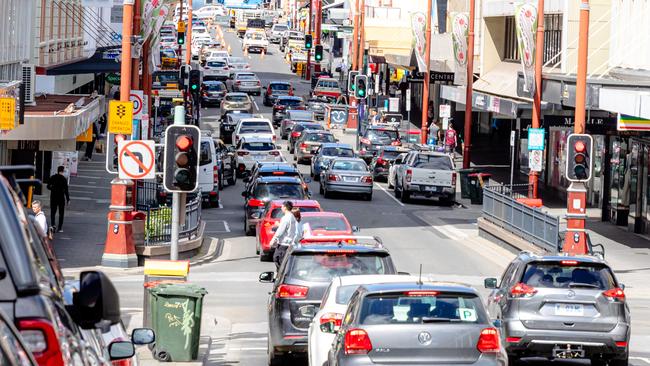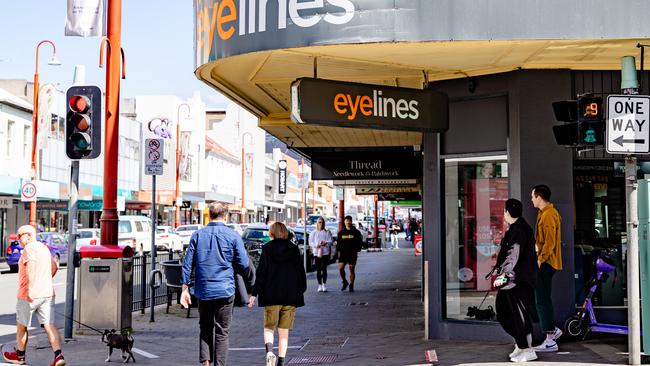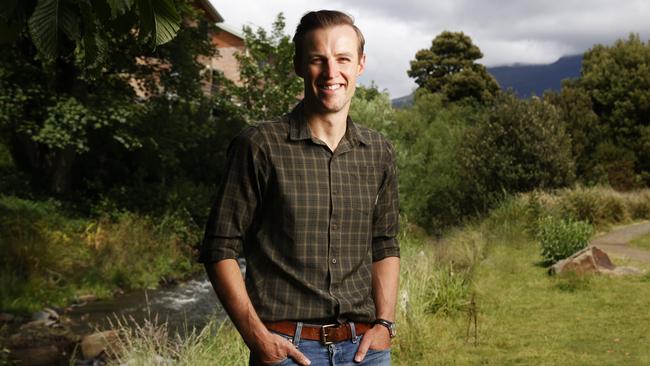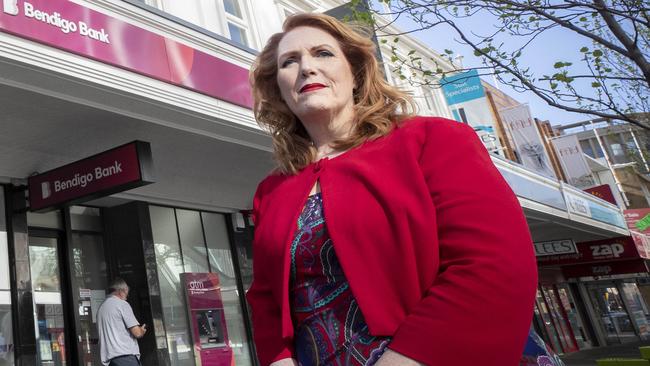Hobart CBD scramble crossings could become permanent after trial deemed a success
Four trial scramble crossings in Hobart’s CBD, which have divided opinion among city-dwellers, could be made permanent a year after they were installed.

Tasmania
Don't miss out on the headlines from Tasmania. Followed categories will be added to My News.
Four trial scramble crossings in the CBD could be made permanent after the Hobart City Council concluded they had improved the pedestrian experience and were diverting motorists away from key inner-city road corridors prone to congestion.
The pedestrian-only traffic light signal phases have been operating at the intersections of Elizabeth and Collins streets, Elizabeth and Liverpool streets, Murray and Collins streets, and Murray and Liverpool streets since September last year.
The trial crossings – established at foot traffic hotspots – are a collaboration between the council and the Department of State Growth and feature a dedicated phase during which all vehicle traffic is stopped to enable pedestrians to cross the road safely, with countdown timers installed on each traffic light to provide real-time information.

It means that when vehicles are eventually given the green light, motorists are able to turn freely without having to wait for pedestrians to cross first.
Some CBD businesses have expressed concern about the crossings, claiming they have resulted in a reduction in trade.
At its Monday meeting, the Hobart City Council will vote on whether or not to make the scramble crossings – which are the first of their kind in Tasmania – permanent and to seek funding for associated capital works.
Councillor Ryan Posselt, the chair of the council’s City Mobility portfolio committee, said trials such as these always experienced “teething problems” but that the scramble crossings had ultimately changed driver behaviour.
“These changes, along with other changes that we’ve implemented, such as streetside dining, help to improve amenity [and] attract more pedestrians and people to the city to enjoy the city for the day,” he said.

A report prepared by council officers recommended the trial be made permanent as it had led to an increase in traffic on Barrack and Bathurst streets – particularly during the evening peak period – since being implemented.
The council says the increased use of the “BBB route” – Bathurst, Barrack, and Brisbane streets – is improving pedestrian “amenity” and “through-city driving experiences”, with motorists using alternate ways to bypass the city centre.
It found that journey times for the Liverpool St corridor increased by 40 seconds from 2023 to 2024, while Elizabeth St saw a 64-second increase, and Murray St saw a 68-second increase.
Just two crashes were recorded at the scramble crossings during the trial period and neither of them involved pedestrians.

Councillor Louise Bloomfield, who chairs the council’s City Economy portfolio committee, said she had concerns about the effect the trial was having on businesses.
“I have consistently asked for [data on] the impact on small businesses in the area because they were coming to me saying that they had seen a 40 per cent drop [in trade] instantly overnight,” she said.
Engineering consulting firm GHD undertook a peer review of the council’s report on the outcomes of the trial and found that while the data had some limitations, the scramble crossings were “consistent with council and state government’s strategic objectives to improve pedestrian amenity in the CBD”.





